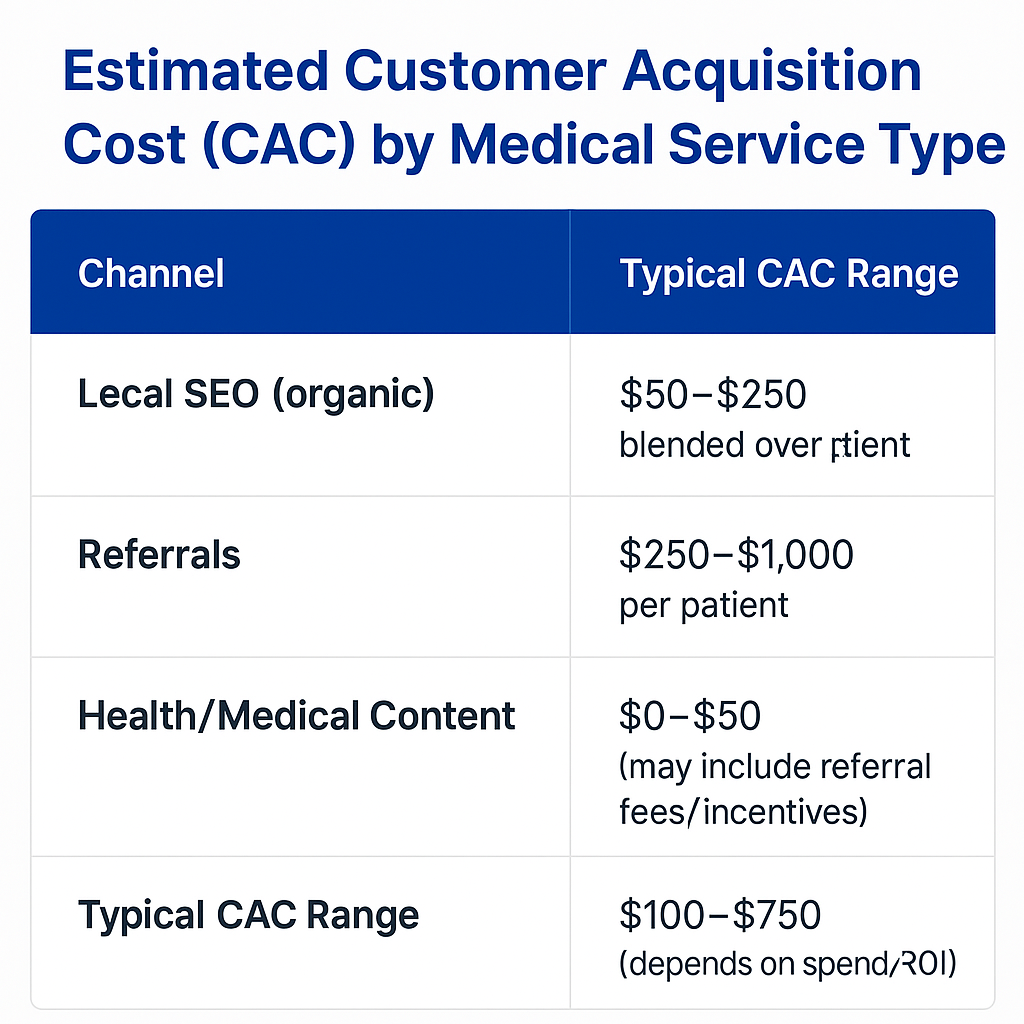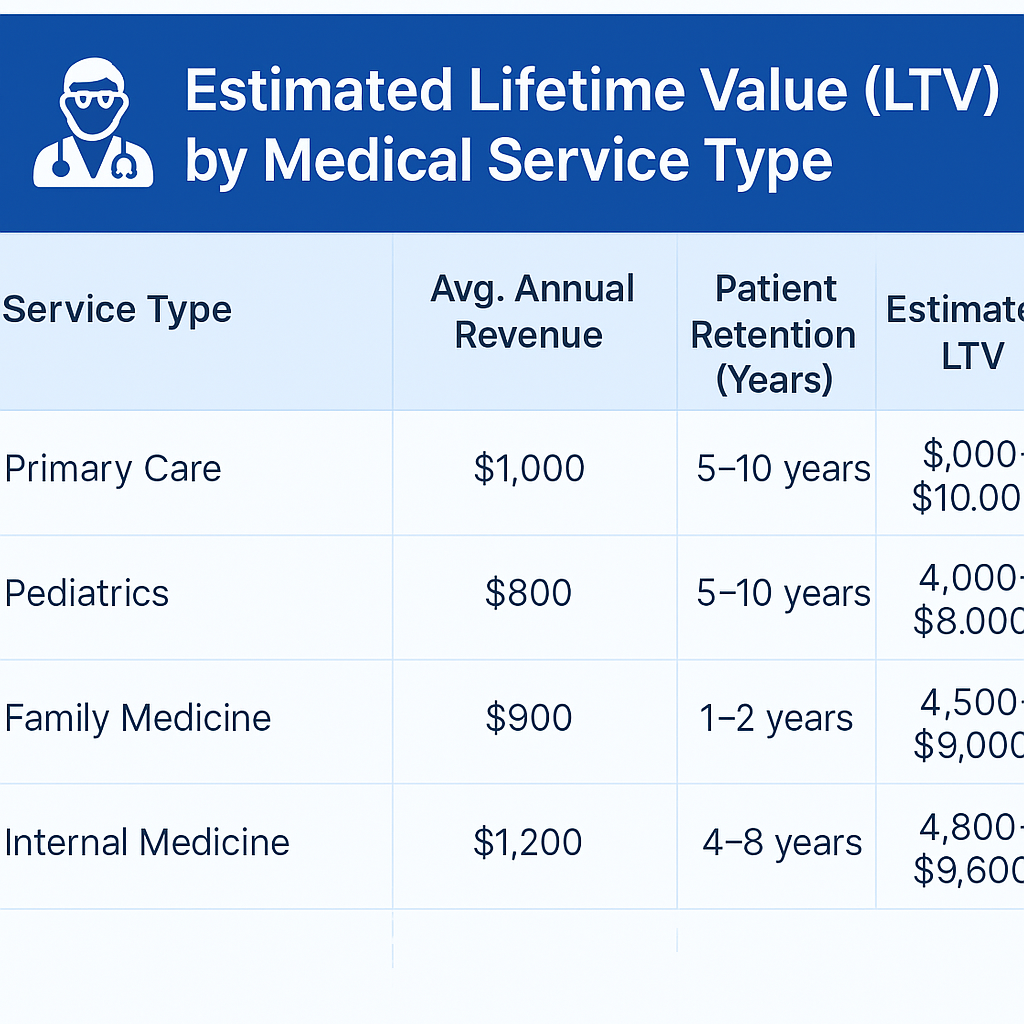When getting ready to kickoff any Marketing efforts, you should always set your KPI’s and understand what success looks like. As a business person, that question should always focus on what is my ROI and what is the lifetime value of the customer. In some cases, you could have an extremely high cost per aquisition for a new patient but feel comfortable that the lifetime value of that client will bring substantial ROAS (return on advertising spend).

You want to know “How Much Will I Earn From a Client?”
The answer can vary considerably depending on numerous factors, but many industry estimates suggest that for a primary care patient at a small medical practice the lifetime value (LTV) might fall roughly in the range of $20,000 to $40,000 over the duration of their relationship with the practice.
Key Factors Influencing LTV
- Visit Frequency: How often the patient sees their primary care doctor and requires follow-up visits.
- Patient Retention: The length of time a patient stays with the practice (often 10–15 years or more).
- Revenue Streams: Beyond regular office visits, revenue may come from lab tests, procedures, referrals, and ancillary services.
- Payer Mix: Differences between reimbursement rates for private insurance, Medicare/Medicaid, or self-pay patients.
- Operational Costs: The costs to acquire and service the patient, including marketing and administrative expenses.
Example Calculation (Illustrative)

If a patient visits an average of 3–4 times per year, generating a net revenue of roughly $1,500 to $3,000 per year after costs, over a period of 10–15 years, the LTV might reasonably be estimated in the $20,000 to $40,000 range.
Final Note
Keep in mind that these figures are averages. The actual LTV for any given practice can be higher or lower based on its specific patient population, geographic location, service mix, and operational efficiencies. Practices often perform their own detailed analysis to tailor the metric to their unique situation.
